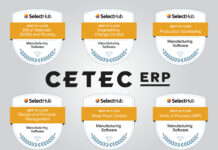When today’s consumers are evaluating their options, they’re figuring sustainability and the product’s carbon footprint into the evaluation process. A report by IBM and the National Retail Federation found that 8 in 10 respondents indicated sustainability mattered to them; 6 in 10 said they’d be willing to change their shopping habits to reduce environmental impact. This means having the least expensive product is no longer an adequate differentiator – and many companies are now taking notice. Sustainability is quickly becoming a competitive differentiator.
Green Regulations in Manufacturing
The Center for Energy and Climate Solutions notes that the manufacturing industry accounts for about 30% of greenhouse gas emissions, including indirect emissions resulting from the sector’s electricity consumption. The EPA defines sustainable manufacturing as “the creation of manufactured products through economically sound processes that minimize negative environmental impacts while conserving energy and natural resources. It also enhances employee, community and product safety.”
In the European Union, the Sustainable Finance Disclosure Regulation (SFDR) went into effect earlier this year. The idea behind this law is to unify transparency rules for financial market participants and financial advisers about integrating sustainability risks and negative impacts in their processes. Companies that fall within the purview of the SFDR must provide sustainability‐related information about their financial products.
This means investors who put capital into Europe or marketing investments in Europe will be subject to Environment Social Governance (ESG) disclosure obligations. The regulation precedes the new EU Taxonomy for sustainable activities, which will provide a clear definition of sustainability and require investments promoted as environmentally friendly to be clear on their green objectives.
The intent behind this taxonomy, which takes effect in 2022, is to promote larger investment in green projects. The U.S. and the UK are considering similar regulations, as the EU directives will apply to companies in these regions operating in the EU area. Though these regulations mainly target the financial industry, they will impact every other sector as regulations like these redirect funds towards more sustainable projects and companies. And this could be just the first of many industries to see sustainability regulation within the next few years.
Environmental Impact in Product Manufacturing
There are several other factors to consider when it comes to product – and specifically, configurable product – manufacturing. For example, how do you help your customers find the right product with the smallest footprint that still meets their requirements? How do you find that balance between performance, price and sustainability? A good example is what‘s happening in the car market. More and more consumers are placing greater emphasis on emissions standards.
These decisions aren’t always cut and dry. Here’s an example: Imagine you’re a pump manufacturer. In the long run, it’s more important that your customers pick the right pump for their situation than pick it based on the energy footprint of manufacturing the pump. That said, environmental impact is taking on increased importance for buyers overall and product manufacturers need to understand their role in this. Customers are looking for transparency, and as a product manufacturer, you can provide this by helping customers understand how to configure your product(s) so that the environmental impact is as low as possible.
The Role of Configuration Lifecycle Management
To help your buyers make more environmentally friendly choices, consider the aid rendered by Configuration Lifecycle Management. It can give buyers insights on how to make the best trade-offs between performance, price and environmental impact. Here’s the opportunity for companies to turn this into a competitive differentiator: each product component or choice can be correlated to a carbon footprint cost.
This is similar to the energy efficiency ratings that the ENERGY STAR program calculates for consumer products. Configuration Lifecycle Management takes that concept in-house and giving each of the different options a rating. Consumers can then see how the different product configuration options stack up and use this information to make a purchasing decision. But it goes beyond this. By using a configurator, it’s possible for the consumer to specify upfront what energy rating they want, for example, and then have the configurator engine guide them toward a set of choices that are guaranteed to be within the overall constraint.
Sustainable Configuration
These days, a product’s total cost involves more than the price tag a buyer sees. Product teams have the opportunity to create a differentiator by highlighting the sustainability of their products. Configuration Lifecycle Management enables your customers to compare options and find the product that aligns with both their business and sustainability goals. It can help lead to purchasing decisions that serve the environment as well as your customers.
About Configit
Since its founding, Configit continues to grow, developing products and solutions to address digital transformation, Internet of Things, and the increasing proliferation of software consumer products. Through cooperation with clients and partners, Configit takes pride in helping organizations with complex configuration problems, as well as helping to shape the future of configuration software.











































